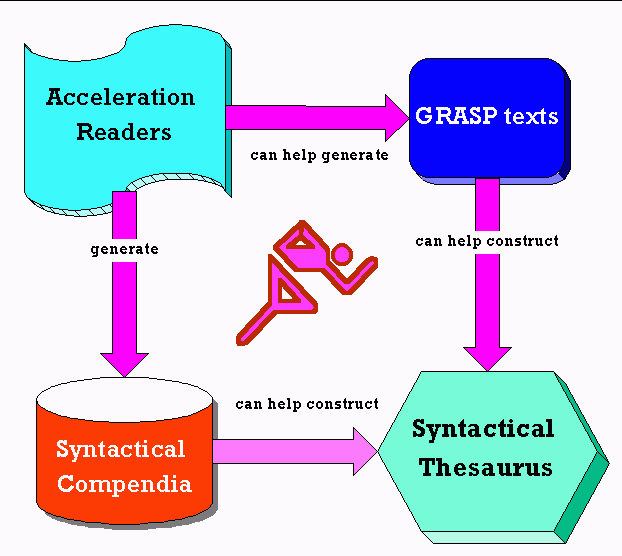|
|
use typographical design to accelerate reading comprehension and
to aid rehearsal and oral presentation. Segmentation helpfully isolates
the syntactical units that need to be mastered. Learners attain
the ability to comprehend larger and larger units at a time,
with an awareness of syntactical relationships (modifications,
parallelisms, subordinations).
|
|
|
can be easily compiled from marked readers. They consist of
syntactical constructions that need to be mastered to assure
speedier reading (adjectival, ablative, genitive, prepositional, gerundive
phrases; subordinate clauses; accusative with infinitive
constructions; idioms; special case uses; etc.) As storehouses
of parallel examples, these compendia can be used to increase familiarity
with such structures and therefore the speed of interpreting them.
|
|
|
can be generated by and used in conjunction with Acceleration Readers.
They present the constituent parts of sentences with
variety and incremental complexity to help readers attain the
ability to grasp the original text in the order in which it is presented,
with immediate comprehension. Repetition is built into this
device, as is progress from simpler to more complex structures.
|
|
|
gathers a wide array of micro-structures that must be
mastered before reading can be fluent. E.g., learners
must be familiar with the structure [direct object - verb - subject]
or [preposition - (genitive + object of the preposition)].
Such phrases can come from any text, but the GRASP texts
and the Acceleration Reader texts can provide a good
basis for gathering such examples.
|

